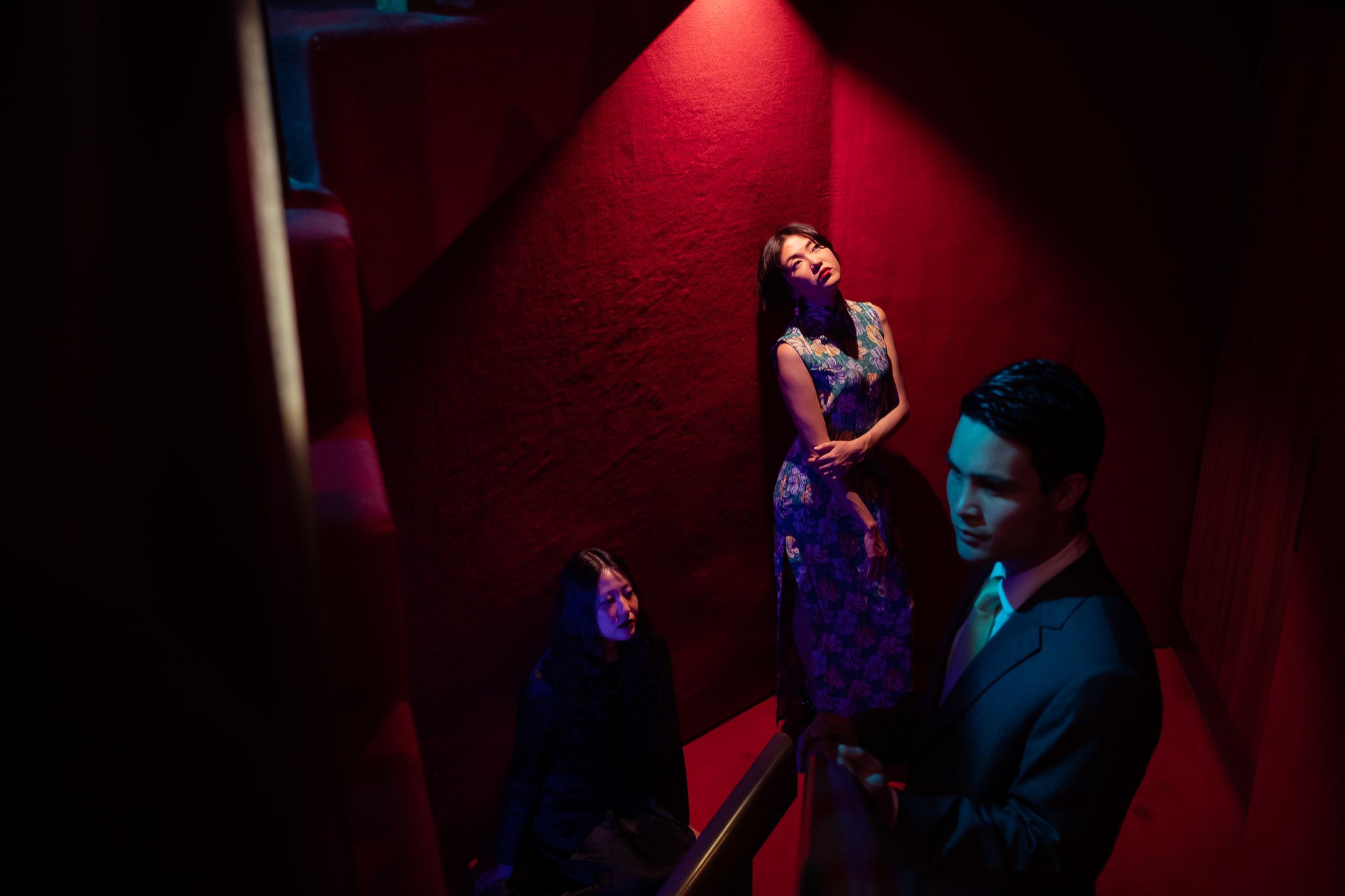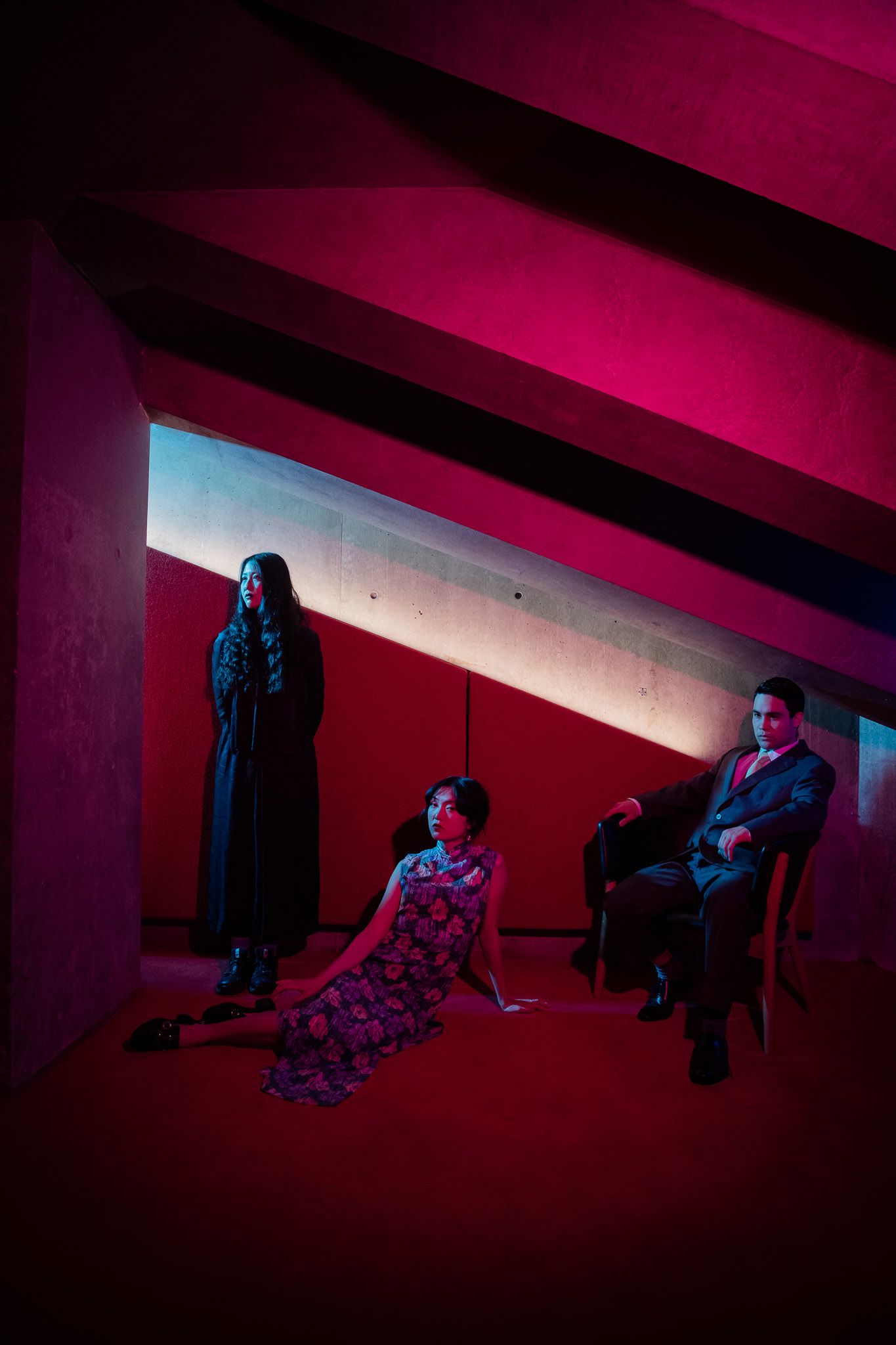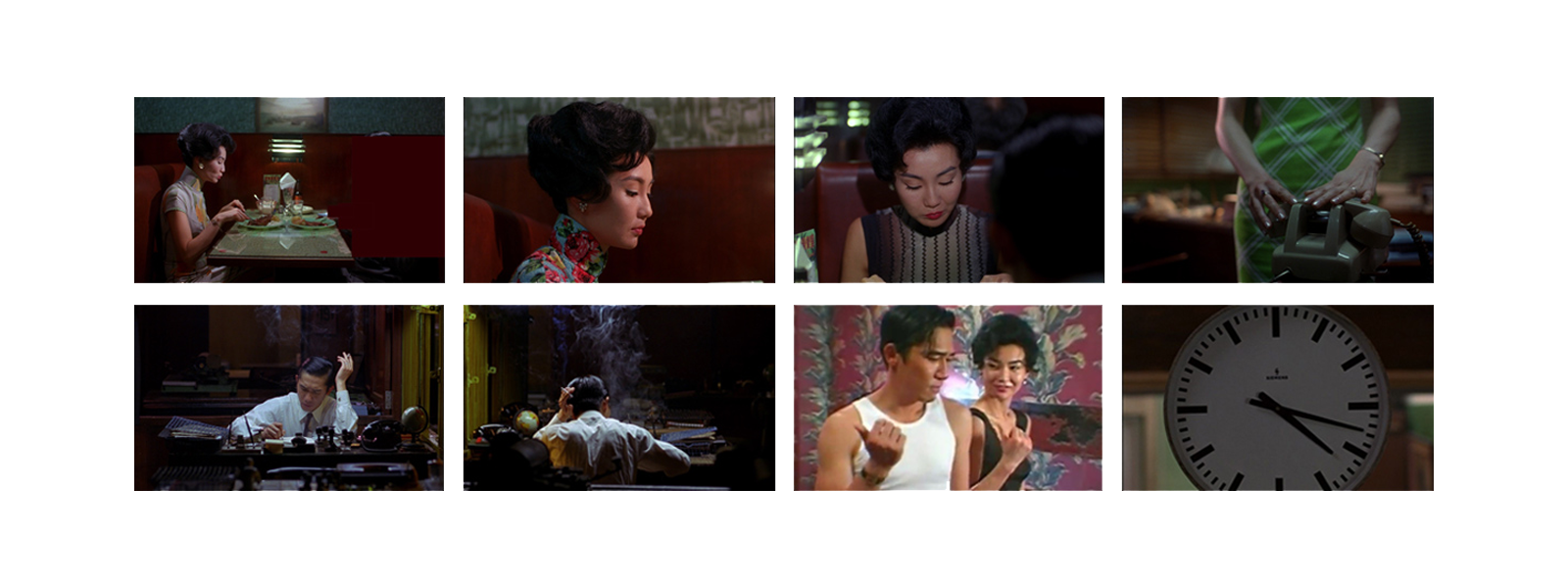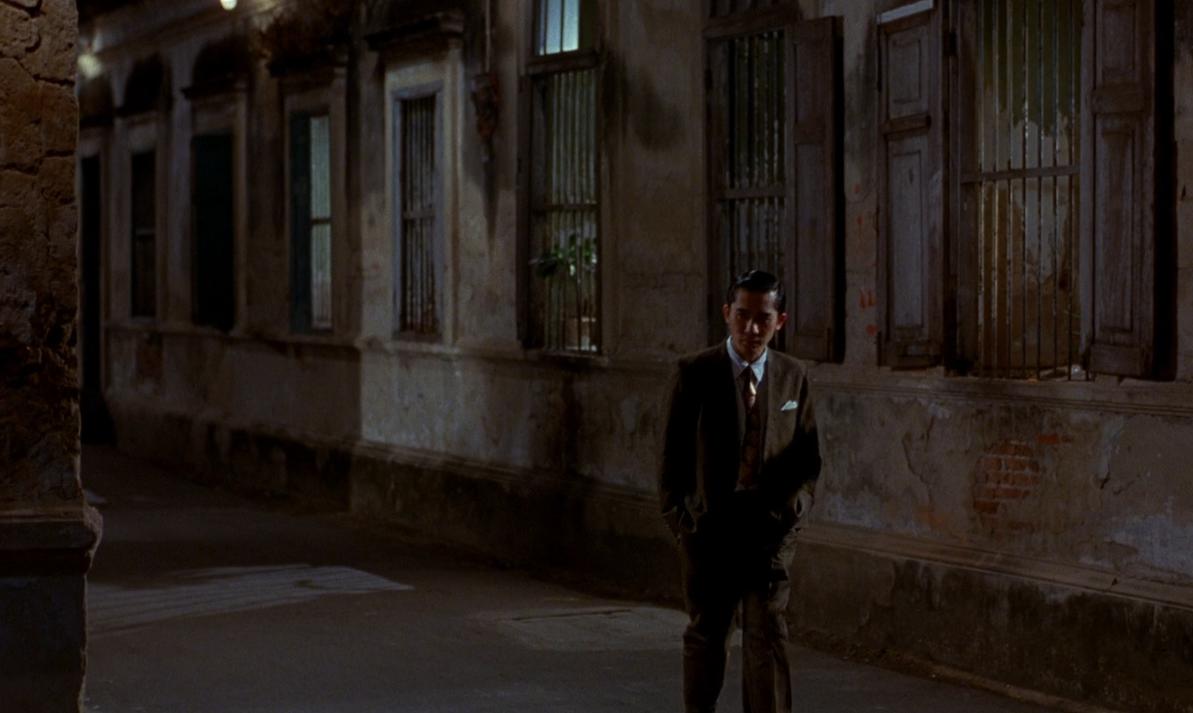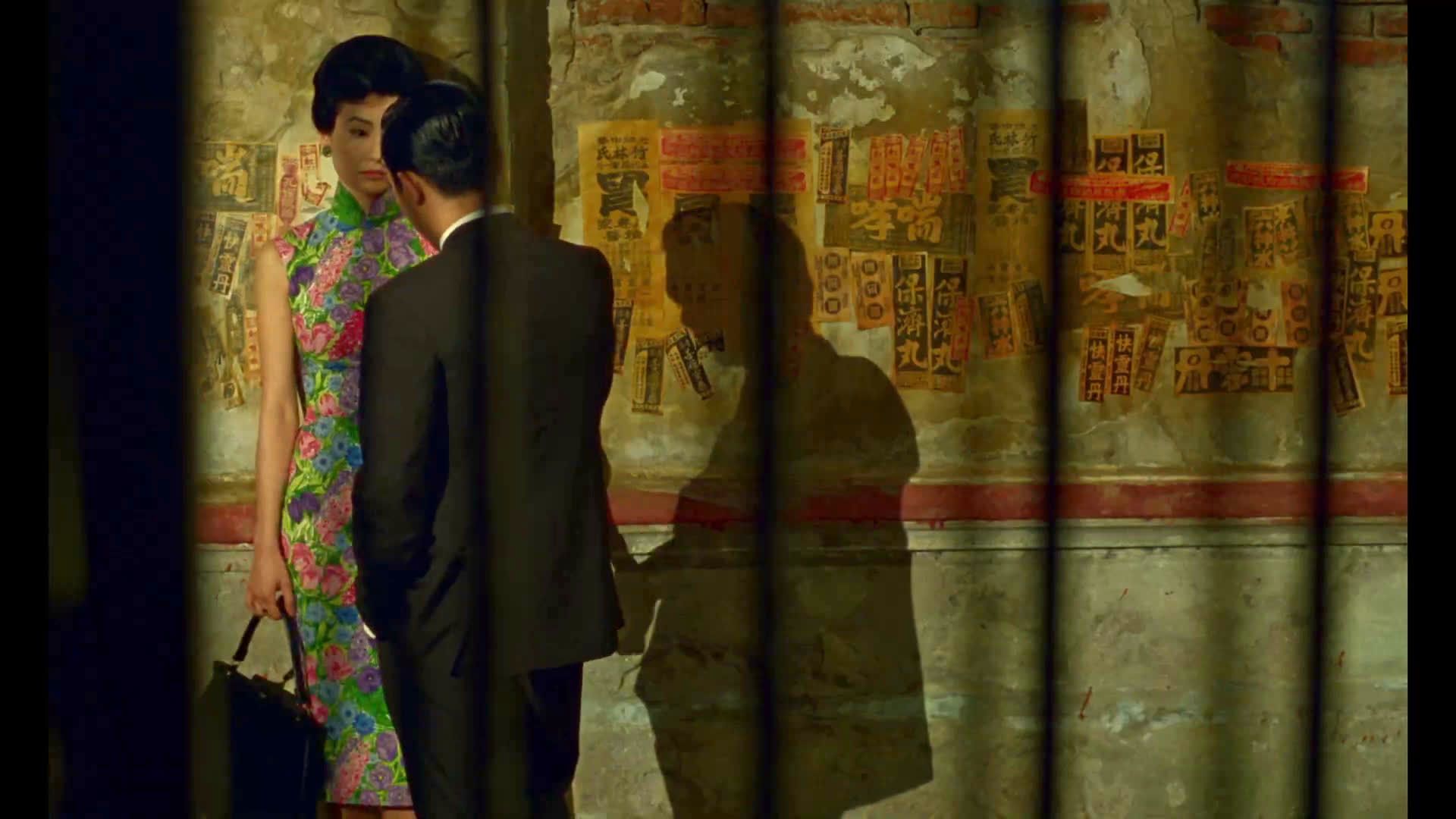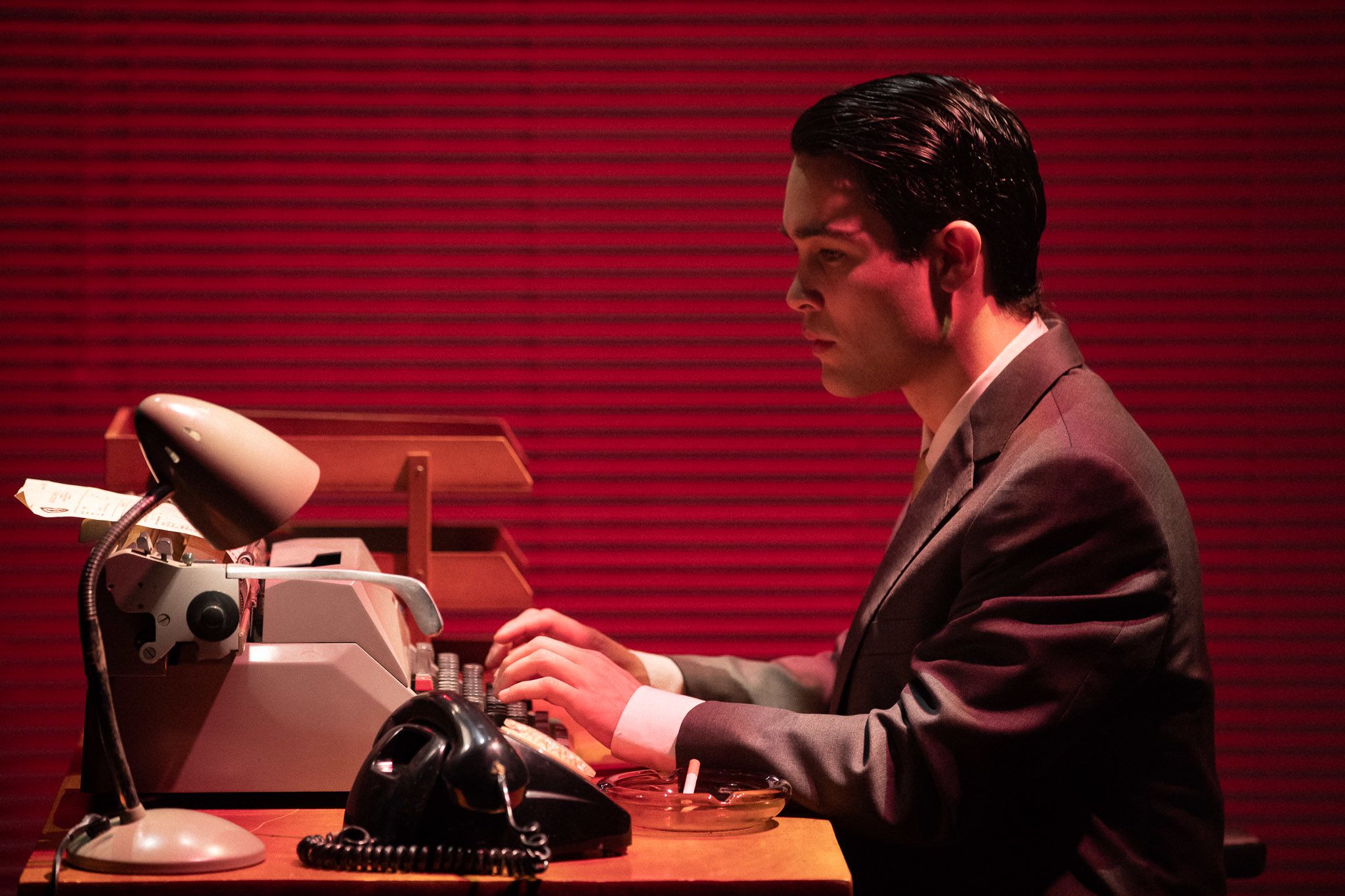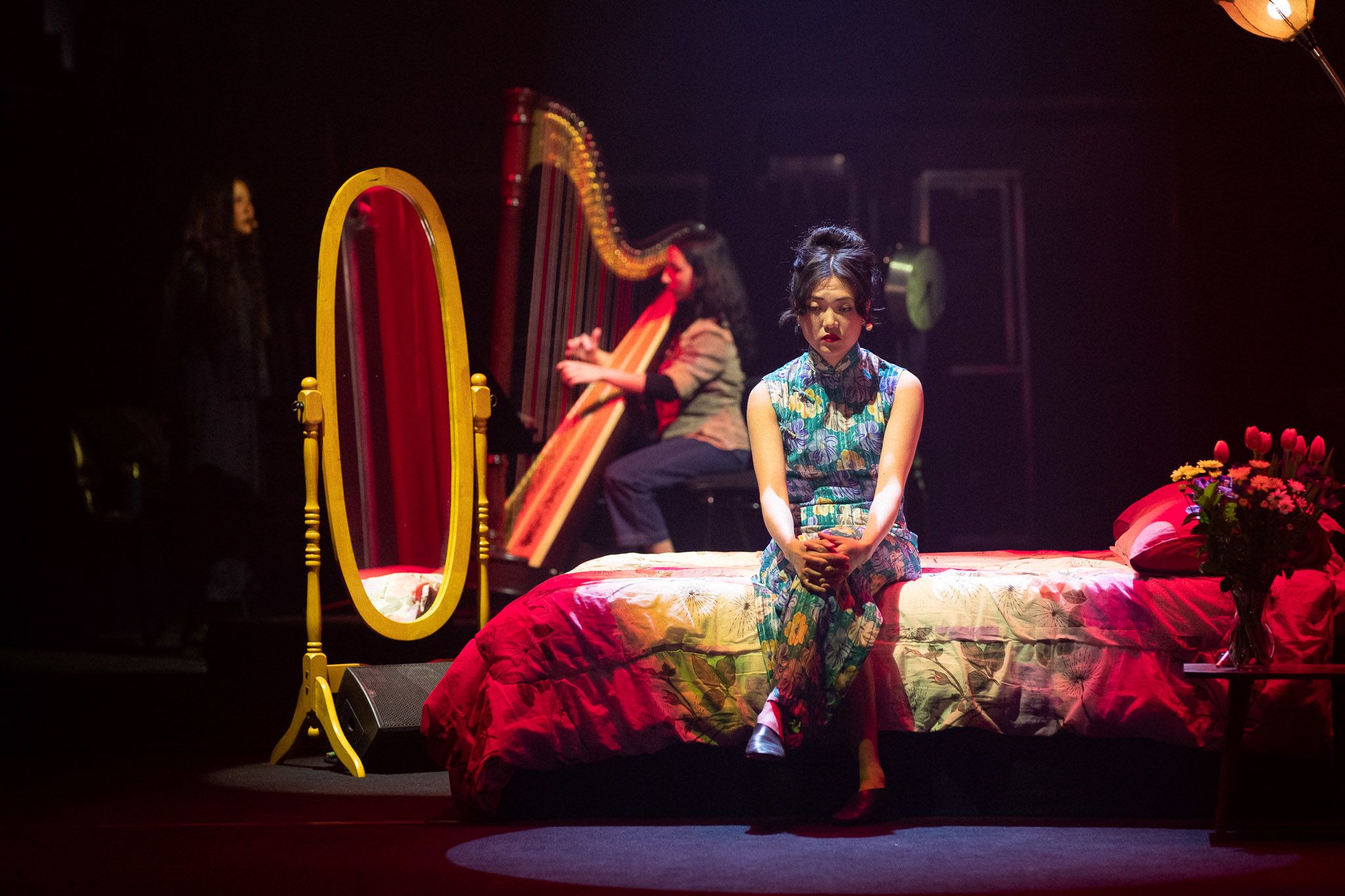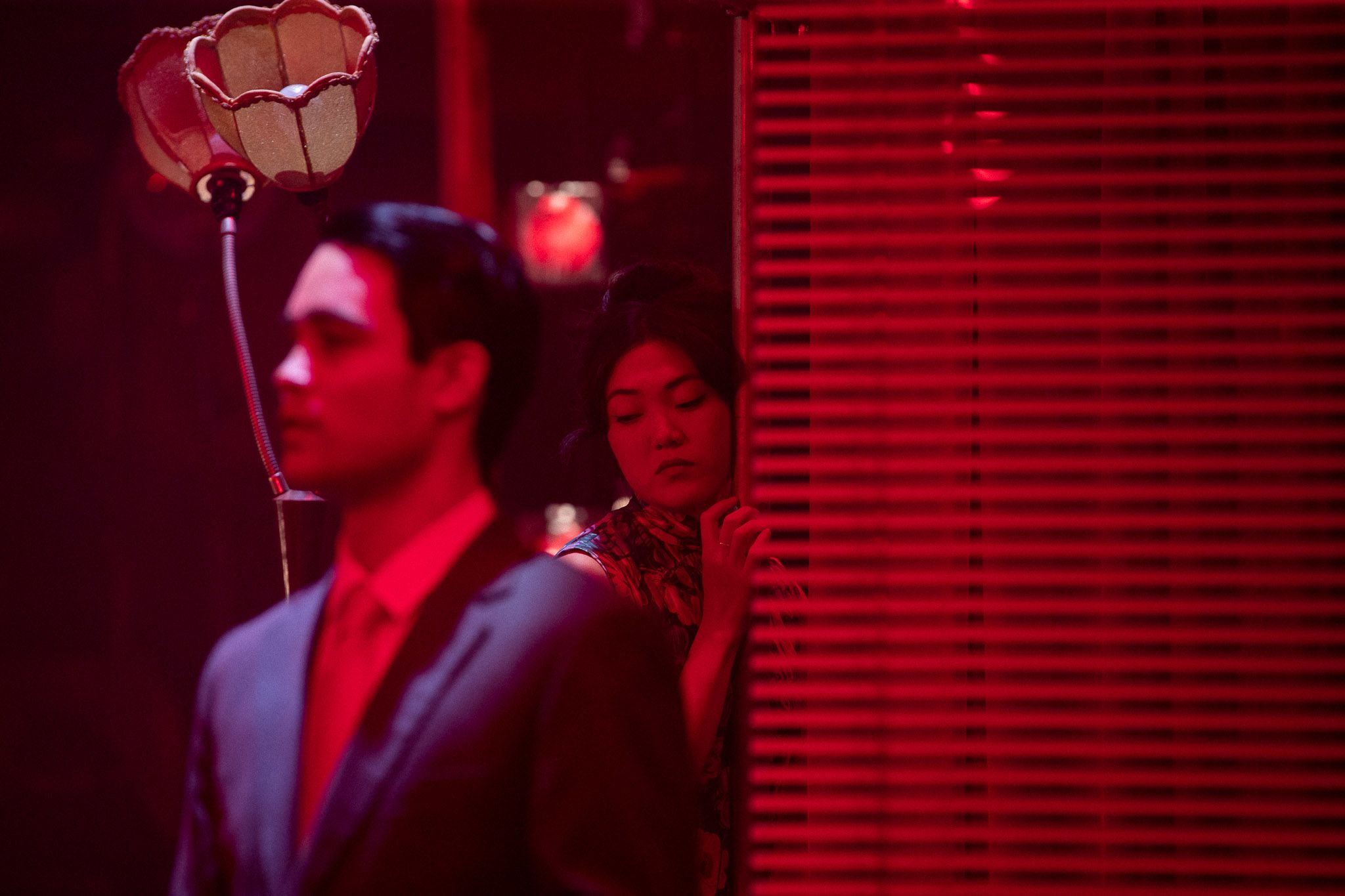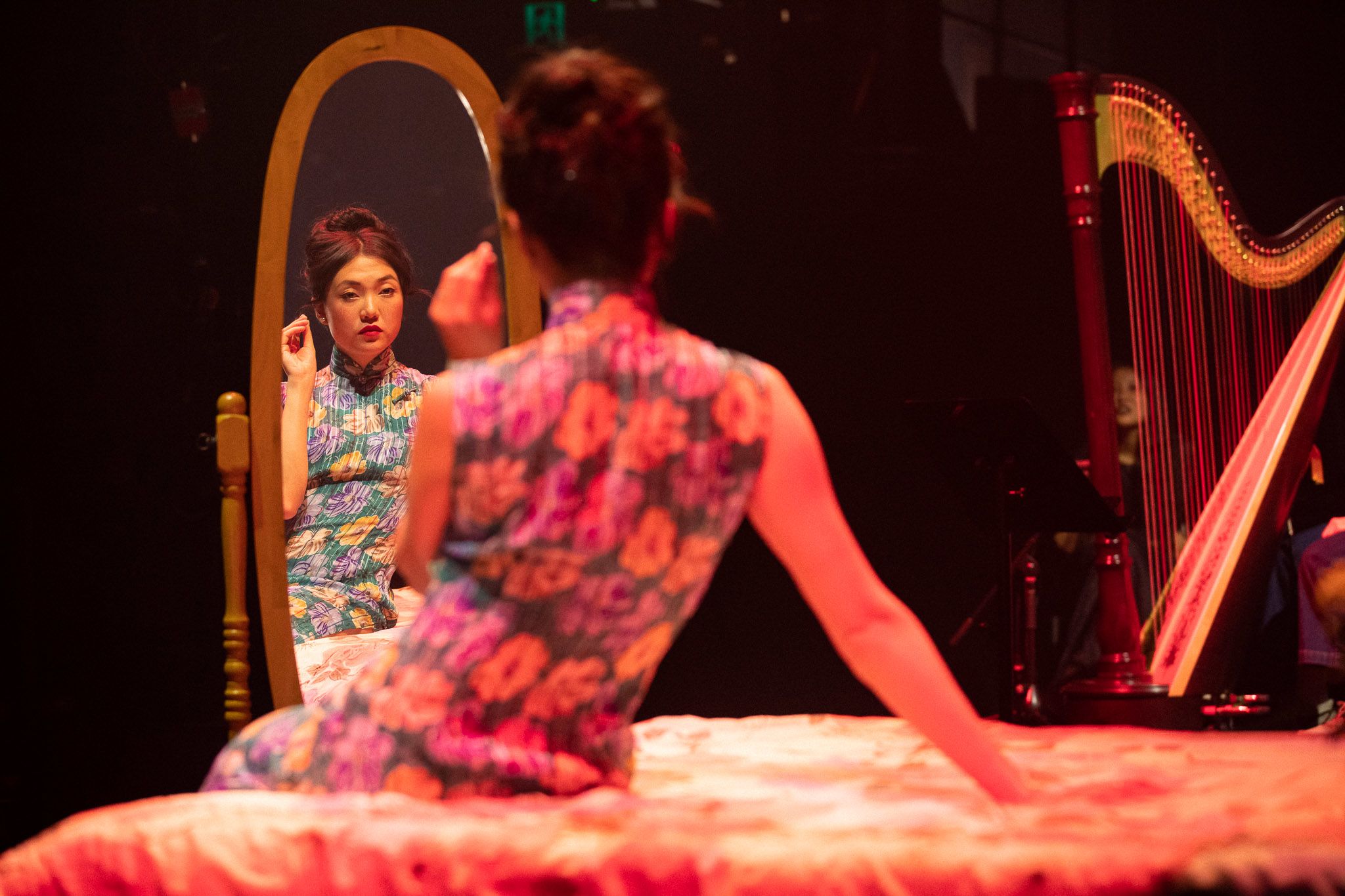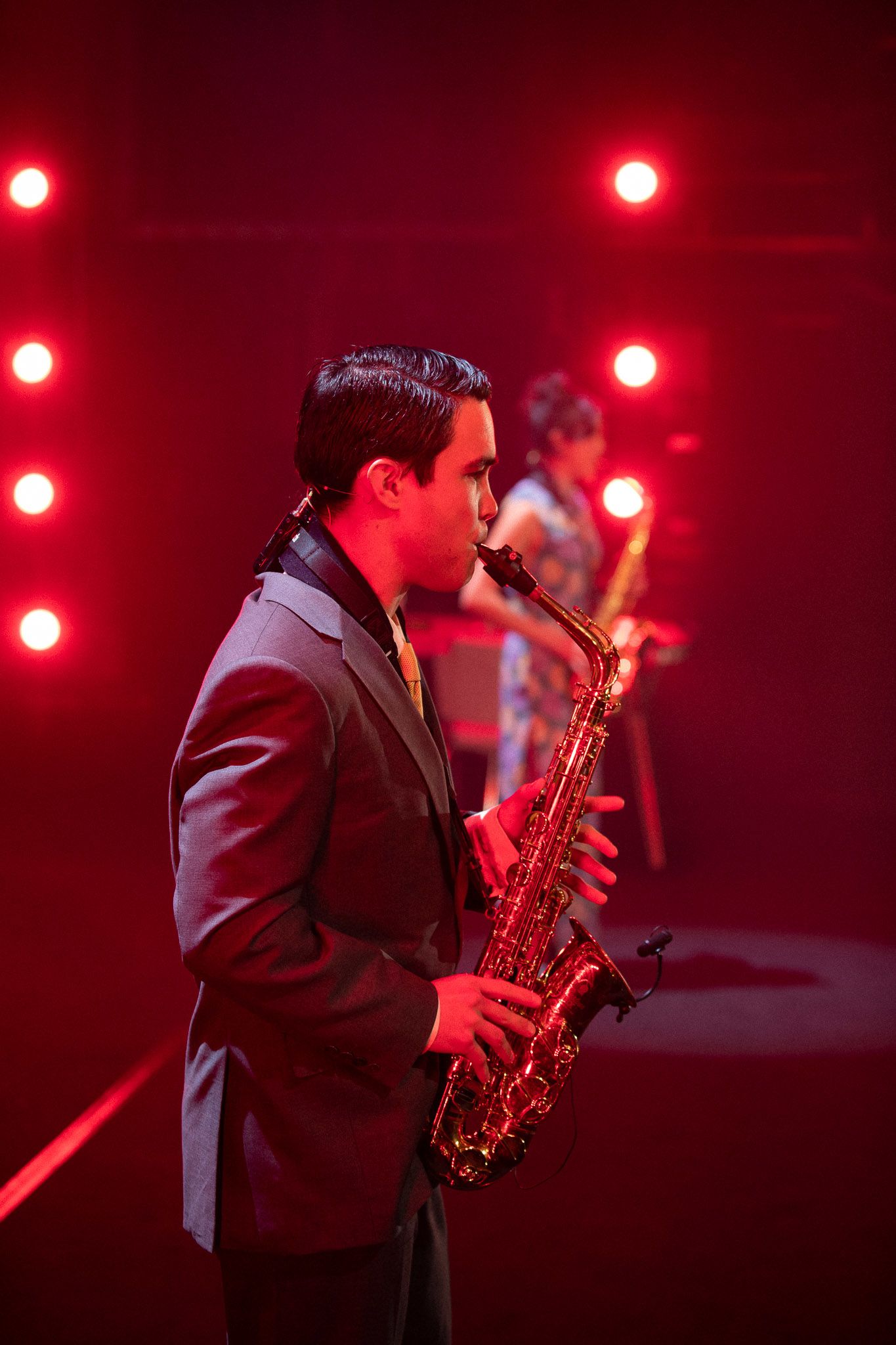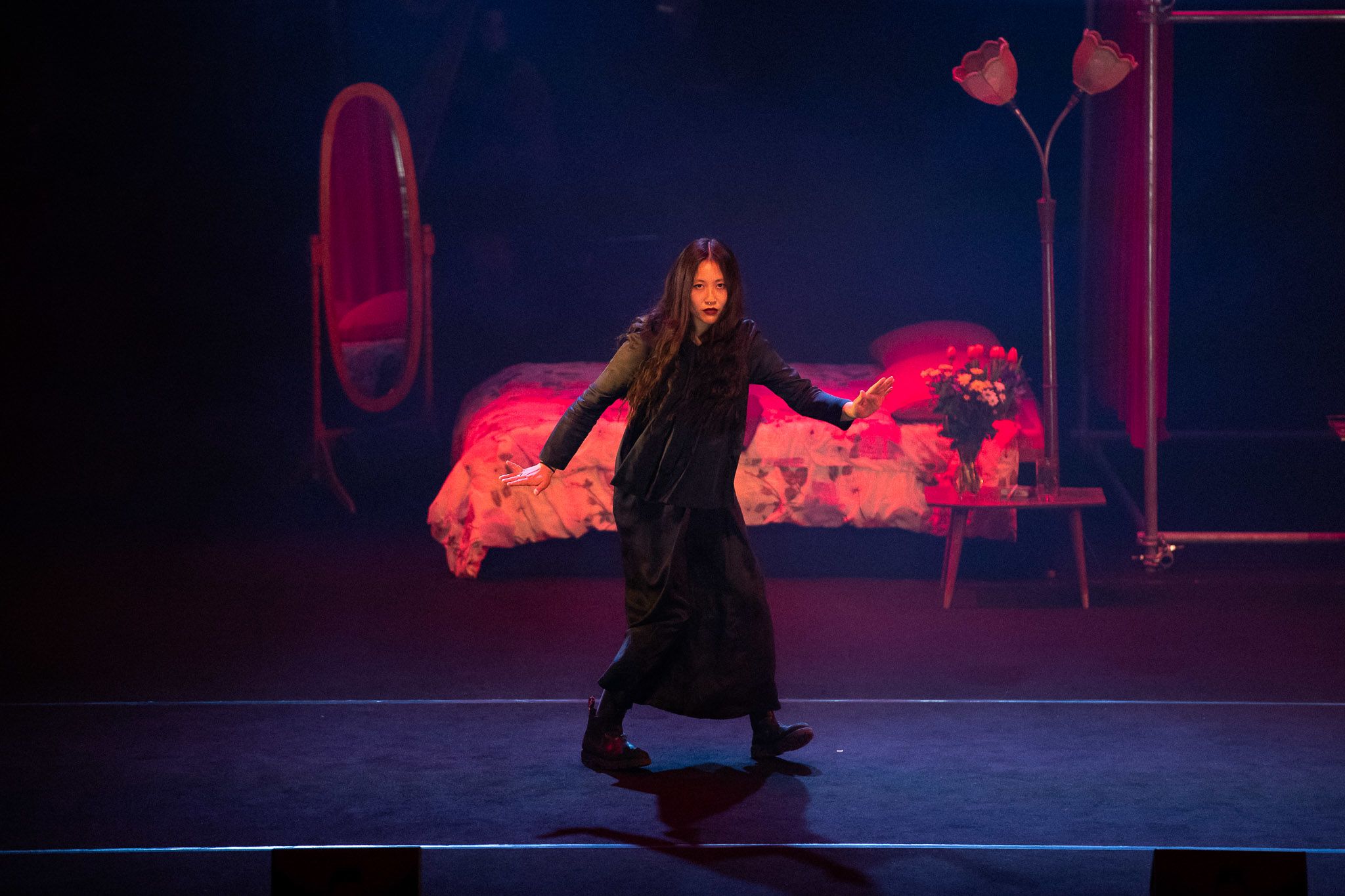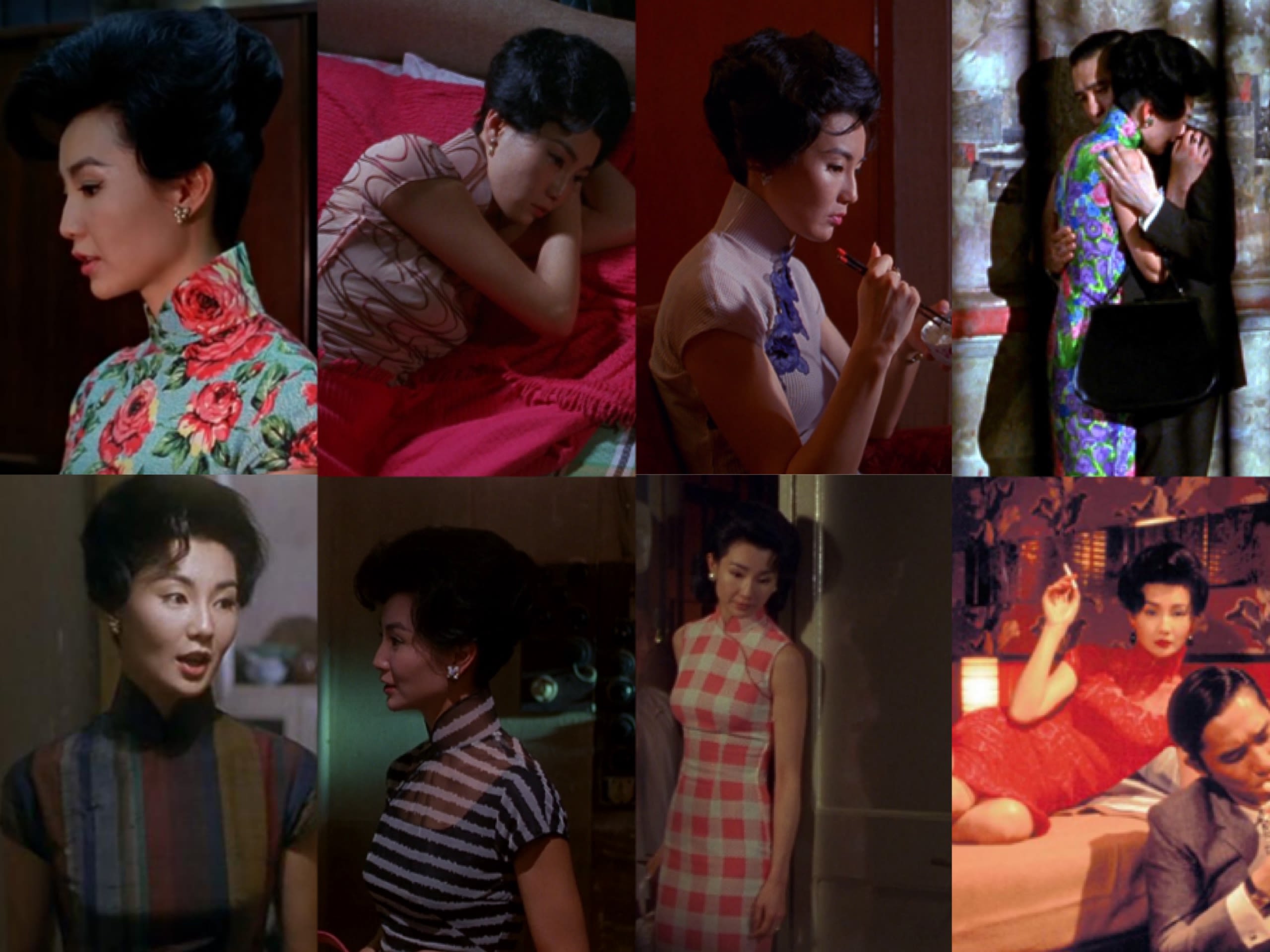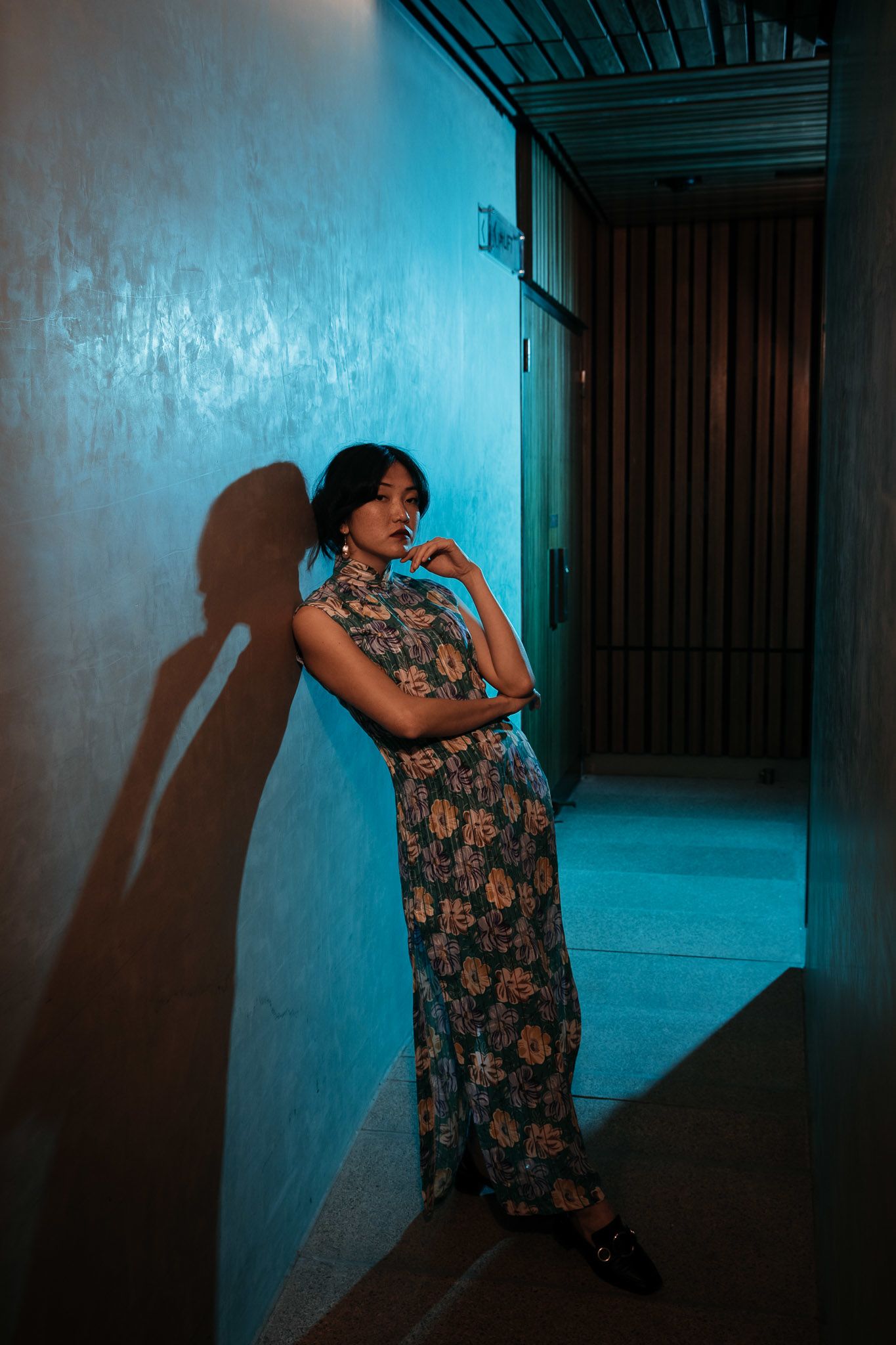(COPY) (COPY)
Wong Kar wai’s opus is regularly ranked among the greatest films of the 21st century, thanks to its breathtaking visuals and its achingly beautiful love story. For the latest Stage Direction, Ying-Di Yin looks at how three Sydney artists have converted In the Mood for Love into a luscious, audio-visual stage production.
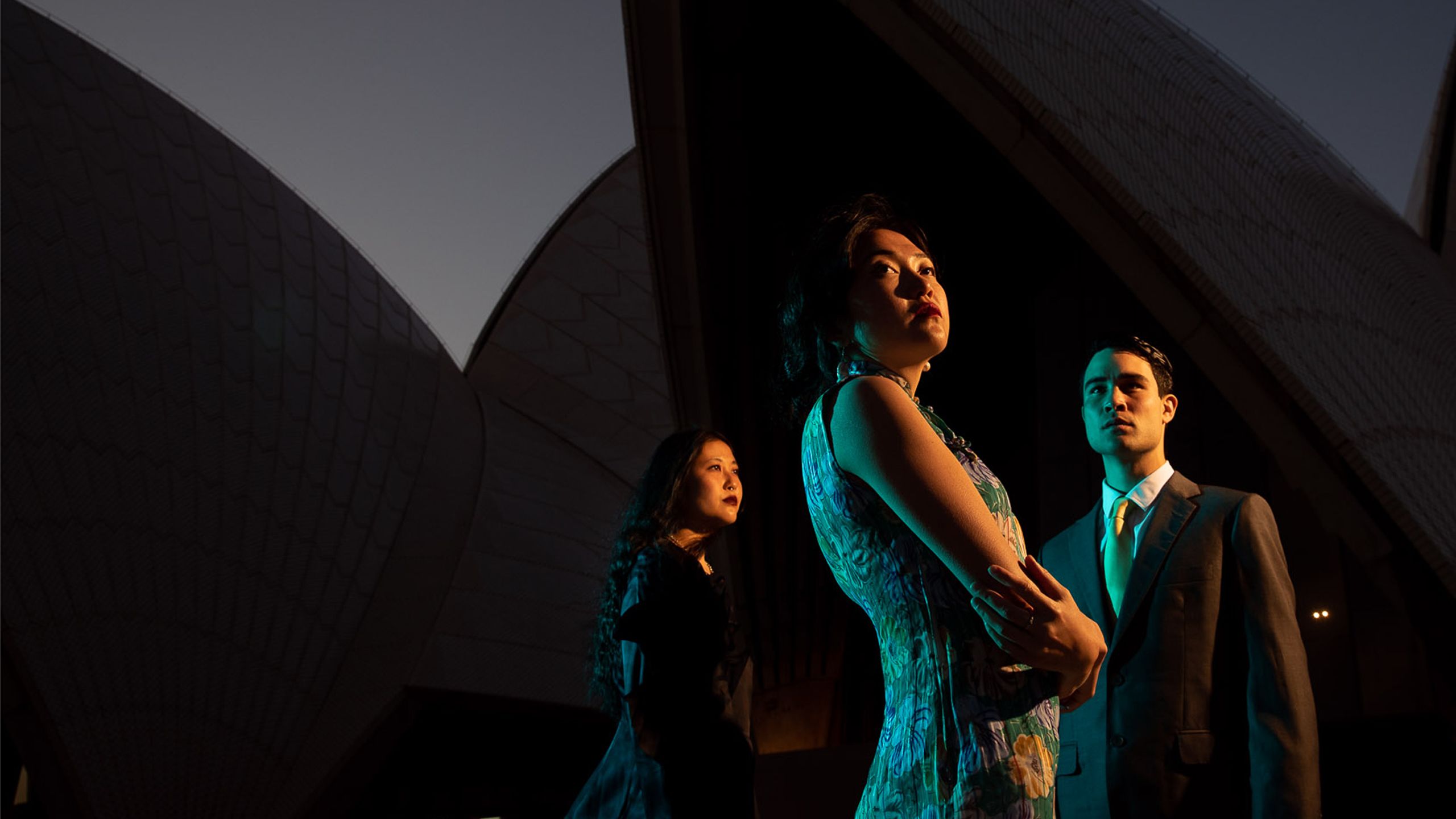
At its core, the beloved Hong Kong film In the Mood for Love is about the power of the unsaid. Frayed moments of love – yearning, ill-fated timing, unfulfilled desire, loss – are explored through Wong Kar wai’s cinematic lexicon.
“There are things that are too risky, too deep and too complicated to be named, so they must be spoken through the colour of someone’s clothes, or the interior design of a space or through music,” says musician and artist Marcus Whale. “Everything is electric, intense and suspenseful; it creates this incredibly romantic, sexual tension.”
Yet, it is also a film born from memory. Set within the backdrop of 1960s Hong Kong, celebrated auteur filmmaker Wong Kar wai turned to his childhood to recreate a nostalgic world, making his most personal film yet. Based on a Japanese short story from the 1960s, he expanded the narrative, incorporating his signature film aesthetics, character improvisation and hyper-stylised sets and costumes, all within a gruelling, 15-month production.
Mrs. Chan (played by Maggie Cheung), a secretary, and Mr. Chow (Tony Leung Chiu Wai), a journalist, are neighbours who move into the same apartment block on the same day. They cross paths in narrow hallways and down laneway stairs, eventually meeting up one evening to confirm a mutual suspicion that their respective spouses are having an affair. Through this devastation, they find comfort with one another which quickly turns to desire that is never acted upon.
Wong Kar wai’s most recognisable and award-winning film celebrated its 20th Anniversary in 2020 and now, more than two decades since its release, it continues to hold influence. Asian-Australian artists Rainbow Chan, Marcus Whale and Eugene Choi pay homage to this scrumptious tale of forbidden love, exploring what is unsaid in an upcoming multimedia stage performance at the Sydney Opera House.
Image: Daniel Boud
Image: Daniel Boud
Love… told through Music
In the Mood for Love looks how it sounds. “It’s about music, actually, and the rhythms of life,” reveals Wong Kar wai’s long-time collaborator, Australian cinematographer Christopher Doyle, in the 2021 documentary Like the Wind about the enigmatic figure. “We were playing music on set all the time to inform the dance between the actors and camera – which I always think is the most important. When Maggie walks to the dai pai dong (noodle stall), where they cross each other, the music suggests a way to compose herself, giving a rhythm to her steps. Those were the most beautiful moments.”
The soundtrack is led by the unmistakable string arrangement of ‘Yumeji’s Theme’ by composer Shigeru Umebayashi. The haunting waltz repeats eight times, each time marking a new stage in our protagonists’ cyclical romantic relationship as it steps in for the ineffable. The theme lingers in your head, just like the protagonists’ feelings remain in their minds only, never becoming a reality.
Growing up listening to film and music imported from the Philippines and America and Shanghainese music, Wong keeps us in this feverish, dream state by curating a mix of Bossa nova, American jazz tracks by Nat King Cole and 1960s Mandarin pop tracks.
Pop musicians themselves, Chan and Whale drew from their own repertoire to conceive the stage adaptation of In the Mood for Love, premiering one night only this June. “We wanted to take essences of what we experienced while watching the film and distil it into these vignettes through music, storytelling, and choreography,” says Hong Kong-Australian interdisciplinary artist Rainbow Chan. “At the time of the original digital production, I had already written ‘Heavy,’ and ‘Doing Word’ and they were naturally in the world of this piece. I was also listening to a lot of old music like Teresa Teng, so I was writing these melancholic love ballads and leaning into that world of the Cantopop diva of the 60s and 70s; it was a nice collision.”
Whale will perform ‘Bengawan Solo’ from the film, a hugely popular track across Southeast Asia and will cover Chan’s Mandarin track ‘Gaosuwo’. The selection of multilingual songs embodies the concept of longing but also embraces translation as another vehicle to reroute unspoken emotions. Adding to the tool of language, “we will also have a scrim in this upcoming performance, to project video, animation, and subtitles, making the stage set feel like a fantastical extension of watching a movie,” reveals Whale. “The subtitles are also a nice nod to Hong Kong cinema. When you go to the cinema, they always have English and Chinese subtitles,” notes Chan.
“It’s that feeling of being
in a crush you know
has no potential
outside of fantasy”
Marcus Whale
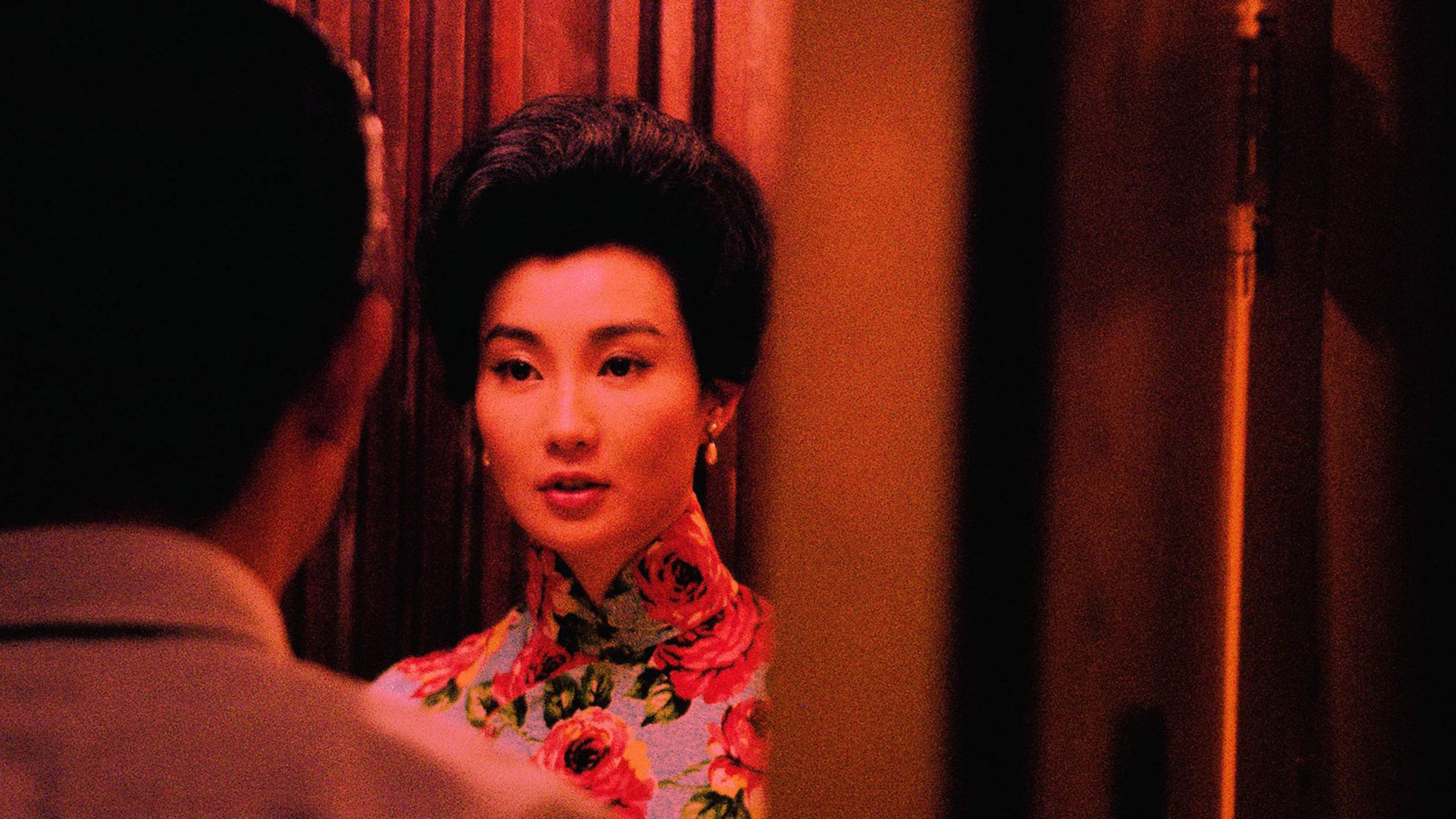
Chan, Whale and Choi have modelled their performance on a series of stills and moments from the film, including a lesser-known deleted scene involving a dance between Tony Leung and Maggie Cheung's characters.
Chan, Whale and Choi have modelled their performance on a series of stills and moments from the film, including a lesser-known deleted scene involving a dance between Tony Leung and Maggie Cheung's characters.
Love… told through spaces
In Wong Kar wai’s films, the Hong Kong apartment is inextricably linked to each narrative. In Happy Together (1997) starring Tony Leung and Leslie Cheung, Doyle and Wong travelled to Buenos Aires and yet halfway across the world, “forty to fifty per cent of the film was filmed in a room that basically looked like Hong Kong,” says Doyle. “We learnt from that film that home is where the heart is. We went so far away from what we thought we were, that we discovered who we were and learnt to be where we are.”
However, interestingly, in order to re-create authentic 1960s Hong Kong, In the Mood for Love was almost entirely filmed in Bangkok due to Hong Kong’s city landscape rapidly modernising throughout the past few decades, eliminating much of Wong’s childhood neighbourhoods.
The cramped apartments, communal areas, and tight corridors recreated in In the Mood for Love amplify the sexual tension between our characters who must simply exist in these feelings. In one scene, Mrs. Chan and Mr. Chow are stuck in a bedroom, unable to leave until the other residents have finished playing mahjong outside. “This space is so intimate, and yet they are frozen. The context is trying to urge them to break their rules, despite their resistance,” says Chan. The viewer feels this friction and mourns the missed opportunities from their inaction.
“It was a challenge translating this to the live show. How do we replicate or channel these intimate spaces on such a big stage? And so, we went the other direction and made it minimal and abstract, not realistic. The centrepiece of the stage is scaffolding, and it acts as a liminal cube to interact with and hints at a frame. The office and restaurant set design are little objects combined that echo the internal world of the film, but we made it more minimal.” The void between these objects allows the audience to fill in the gaps and think and feel.
The locations are also a recollection of Wong’s childhood. Initially fleeing from Shanghai to Hong Kong temporarily as the Cultural Revolution loomed, his family expected one day to return to China, only to never do so. While waiting “we recreated a small Shanghai in Hong Kong. It was like building a dream there,” says Wong. He uses In the Mood for Love to reconstruct this liminal world and just as the decadent, colourful sets are impermanent, we are reminded that Mrs. Chan and Mr. Chow’s growing passion is doomed to disappear.
For Chan, “the film captures a collective sense of anxiety around the time of Hong Kong’s handover [in 1997]. It also marks a significant shift in my own personal history and family lineage. My family and I had just migrated to Australia in 1996 when Wong was making his iconic trilogy. And in recent years, a lot has changed in Hong Kong's landscape. To me, it's a real allegory for the city disappearing, and things existing in these liminal spaces.”
The feeling of being suspended in a dream and between two worlds also resonates with the Asian diaspora. “Wong’s works are already so dramatised and melancholic; it has these obvious signifiers that are very Chinese in nature. Therefore, it offsets the idea that there was ever an original, strengthening the belief that periphery experiences are equally as valid and rich. His world complicates the idea of what originality means in the case of place and time because it is so stylised. There is a reflective thing that Wong does,” contemplates Chan.
“I sometimes treat space as a main character... the silent witness to the whole story.”
Wong Kar wai interviewed in the New York Times
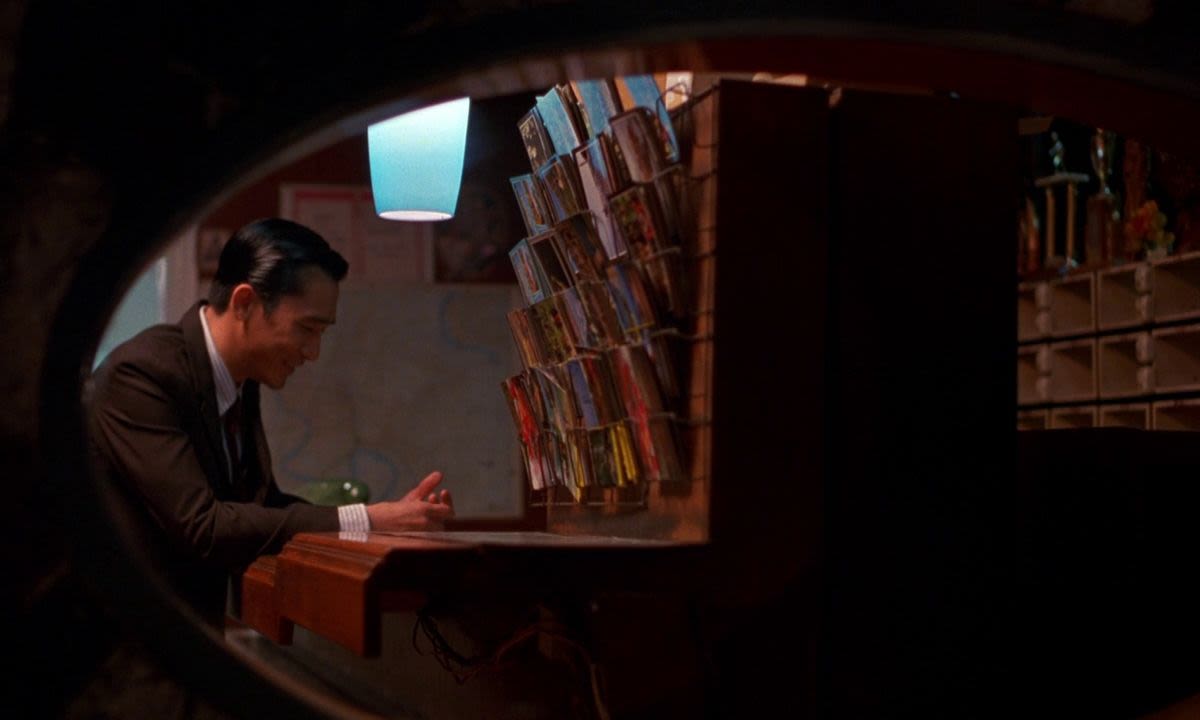
Image: Daniel Boud
Image: Daniel Boud
Image: Daniel Boud
Image: Daniel Boud
Image: Daniel Boud
Image: Daniel Boud
Image: Daniel Boud
Image: Daniel Boud
Image: Daniel Boud
Image: Daniel Boud
Image: Daniel Boud
Image: Daniel Boud
Love… told through costume
There is an abundance of visual stimulation in the film, but none is more mesmerising than Maggie Cheung in a beautiful, high-neck-collared, and figure-hugging, traditional Chinese cheongsam (or qipao). At once sexually igniting and restrictive, the iconic costume choice is an integral part of the storytelling. With almost thirty costume changes, the silk-patterned cheongsam is used to mark the passing of time and translate a feeling, transfixing both the audience and our protagonists.
A traditional dress robe from the Qing dynasty, the garment evolved in the 1920s and 30s Shanghai, during a time of glamour and hedonism, into what it is today. The garment was worn daily but as Hong Kong modernised and the immediacy of the Cultural Revolution grew, the style faded by the 1970s.
Physically, the tightness of the dresses and of Mr. Chow’s suits restrict their body language, suppressing their actions, and yet, they are equally exposed, clad in form-fitting outerwear. It flirts with a sexual energy that cannot be ignored. Emotionally, Mrs. Chan’s clothing at first blends into the surrounding office and apartment wallpaper, signifying her dormant living. Over time, as her passion for Mr. Chow deepens, she comes alive, and the patterns begin to clash with the decor and modernise. Strong colours are used like red and green fabrics, representing sexual tension and jealousy.
For the stage adaptation, Chan wished to honour the Chinese dress and its meaning. “When I was a child, I trained in Chinese calligraphy painting and my Shanghainese teacher gifted me this handmade, silk qipao from Shanghai. It was incredibly special to be gifted this piece that was so important to her, and it was an incredible chance to wear it.”
Whether you resonate with love loss, missed desires or a bygone era, In the Mood for Love invites you to not say a word but instead sit in this enchanting visual experience of romantic doom that at once feels so familiar and yet is beyond the reaches of realism.
In the Mood: A Love Letter to Wong Kar-wai and Hong Kong played in the Sydney Opera House Drama Theatre on Thursday, June 2nd 2022.
Like the Wind is currently available to watch on Plex.
Image: Daniel Boud
Image: Daniel Boud
“That era is past,
nothing that belonged
to it exists anymore.”
In the Mood for Love
